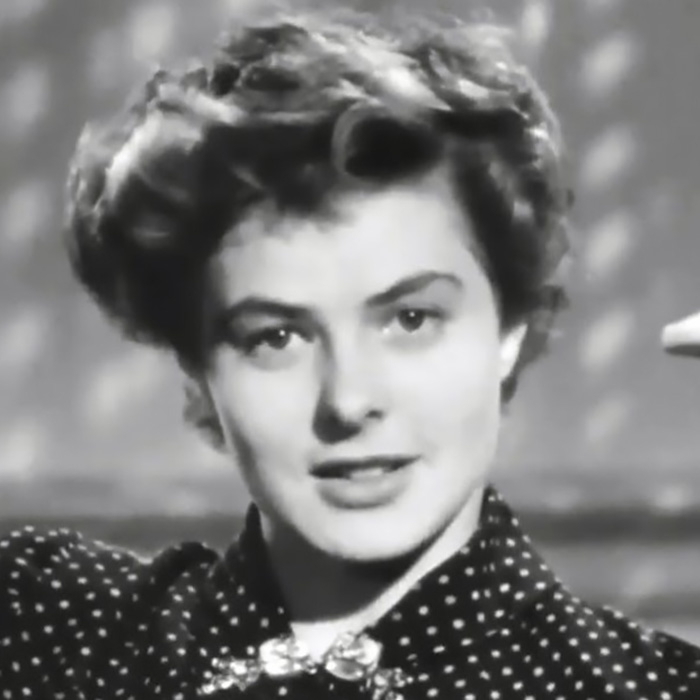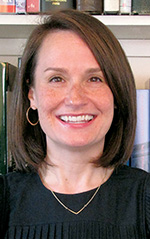OWI and the “Battle of Sweden”
BY WILLIAMS S. MARTIN AND DARIA GASPARINI

Villa Åkerlund, which has served as the official residence of the U.S. Ambassador to the Kingdom of Sweden since 1947. In 2020 it was added to the Secretary of State’s Register of Culturally Significant Property.
U.S. Department of State
On June 13, 1942, after considerable debate within the U.S. government, President Franklin Delano Roosevelt established the Office of War Information, which was divided into a domestic branch and an overseas branch. From its headquarters in New York, the latter grew to include 40 outposts. London was the first, followed by Stockholm. This is the Stockholm story.

Ingrid Bergman, in a still from “Swedes in America.”
U.S. National Archives and Records Administration
The playwright and FDR speechwriter Robert Sherwood, who headed OWI’s Overseas Branch for its first two years, tapped a 35-year-old photographer and designer best known for having served as a personal secretary for the architect Frank Lloyd Wright to head the new office. Karl Jensen had been born and raised in Copenhagen and had the additional advantage of having been in Stockholm since March 1942, working for the Office of the Coordinator of Information, an OWI predecessor agency.
OWI Stockholm, which operated as the Press and Information Office of the U.S. Legation (as the U.S. embassy in Stockholm was then known), faced a daunting challenge. Jensen had to persuade the Swedes that the United States and its allies would win the war then raging across Europe and Asia. He also needed to make the case that the United States was a country Swedes should admire and even support.
This was in the face of a broad and pervasive propaganda campaign by the Nazis in Sweden that a German and Axis victory was inevitable, and that the U.S. war effort was doomed to fail, in no small part due to the country’s internal societal challenges of racial conflict and crime. OWI Stockholm was tasked, as well, by OWI headquarters in Washington to report on what was going on in Sweden and nearby Germany and the occupied countries of northern Europe, and to convey news and information about the Allied war effort to their citizens.
Jensen and his colleagues in the legation, which was headed by the experienced U.S. Minister Herschel Johnson, had to tread carefully. Germany’s occupation of neighboring Denmark and Norway and its victories on the battlefield in the first years of the war were a constant reminder to Swedes that their neutrality and continued independence were fragile. While Swedes were inclined to support the United States, the Swedish government was determined not to give Hitler an excuse to invade.
Relations between Sweden and the United States, and its close ally the United Kingdom, were strained at times by differences over how Sweden’s wartime trade, including in iron ore and ball bearings, with Germany and the Allies should be handled. Even the sharpest American critics of Sweden’s trade with the Nazis, however, did not want Sweden to be occupied and the United States to lose its vantage point in Scandinavia.

Karl Jensen, head of OWI Stockholm at Villa Åkerlund in 1944.
© 2022. The Liberty Library Corporation
To meet its mission, the new office needed space and staff. In time, Jensen got both. By January 1943, if not before, the Press Office (joined by the naval attaché) had taken over a magnificent villa designed and constructed in 1930-1932 for the Swedish publisher Erik Åkerlund. The U.S. government had rented it on and off since 1933 for the U.S. Minister and ultimately purchased it in December 1942 at Minister Johnson’s urging.
Jensen and what would eventually be roughly 45 full- and part-time staff, including more than a dozen Americans, moved in. They boarded over the basement swimming pool and set up printing presses. The first-floor reception rooms and upstairs bedrooms were converted into offices. A radio tower was installed on the roof. Then they went to work.
Jensen’s deputy, a Swedish-born photographer, oversaw the flow of U.S. and Allied information into Norway and Denmark, including illustrated magazines. Others supplied Swedish newspapers (as well as Finnish ones) the latest news and photos from the front and, together with their British colleagues, helped break what had been a Nazi news blockade. In time, hundreds of thousands of Swedes each week watched OWI-supplied United Newsreels. OWI-supplied American movies, including the 1943 OWI short “Swedes in America” featuring Ingrid Bergman, soon supplanted German films in the theaters.
Other OWI staff, among them a former Vogue editor and a celebrated novelist, made a persuasive case for American culture to Swedish women and men. Still others provided U.S. outlets with news about Germany. Jensen and what today we would call his public diplomacy team played a key role in winning what one American journalist labeled the “Battle of Sweden.” They also helped lay the groundwork for the close people-to-people ties the United States and Sweden enjoy today.
To learn more about OWI’s Stockholm outpost, please see the 2021 exhibit, “The U.S. Office of War Information’s STOCKHOLM OUTPOST 1942-1945,” which is now posted in digital format on U.S. Embassy Stockholm’s website.
Read More...
- “Telling America’s Story in a Time of War: The U.S. Office of War Information’s Stockholm Outpost, 1942-1945,” U.S. Embassy Sweden, 2021
- “We Told the World,” by Ted Olson, The Foreign Service Journal, August 1968
- “Improving the U.S. Public Diplomacy Campaign In the War Against Terrorism,” by Council on Foreign Relations, November 2001





